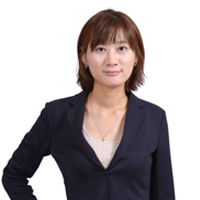‘Koreans need more color to housing’: Mendini says
By Shin Ji-hyePublished : April 28, 2016 - 17:58
Koreans who seek fulfillment in their lifestyle need to add more colors to their homes, said eminent Italian designer and architect Alessandro Mendini in an interview with The Korea Herald on Thursday.
“Korean apartment buildings, which are stereotyped as gloomy gray and rectangle, have hardly changed since I first came here 15 years ago,” Mendini, who has visited Korea around 40 times during the period, said in an interview at POSCO Engineering & Construction’s headquarters in Songdo.
The Italian architect has recently teamed up with POSCO E&C to design the company’s new apartment project, the second time since he participated in the design of the exterior of its “The Sharp’’ apartments in 2013.
He said he would mainly use colors and geometric patterns for the designs of the new project, which will be completed in three years.
The design guru said colors at residential areas are important as they can make the residents less serious, more cheerful and crave to go on vacations.
“Korean apartment buildings, which are stereotyped as gloomy gray and rectangle, have hardly changed since I first came here 15 years ago,” Mendini, who has visited Korea around 40 times during the period, said in an interview at POSCO Engineering & Construction’s headquarters in Songdo.
The Italian architect has recently teamed up with POSCO E&C to design the company’s new apartment project, the second time since he participated in the design of the exterior of its “The Sharp’’ apartments in 2013.
He said he would mainly use colors and geometric patterns for the designs of the new project, which will be completed in three years.
The design guru said colors at residential areas are important as they can make the residents less serious, more cheerful and crave to go on vacations.

Also, it is a much simpler way to give life to buildings whose shapes are much more difficult to alter due to the high cost and small size of land.
Mendini appears to be in favor of the lack of unity rather than monotony. Asked how he views some places in Seoul mixed with modernity and tradition without uniform designs, he said, “If the entire city is full of incongruity, that would still be an attractive and unique point itself,” he said.
He took the Dongdaemun Design Plaza, a major urban development landmark in Seoul, as an example.
The building is viewed by many here as not having any harmony with other traditional places, but he still finds it attractive as the building is modern and emits a great energy to the place nearby.
He also has high expectations on the city’s growing demand for design, saying the trends of Korean architecture and design have changed a lot during the past decade.
“The power of Korean designs has become stronger recently. Designers have become more innovative and have started showing more interest in colors,” he said.
By Shin Ji-hye (shinjh@heraldcorp.com)


















